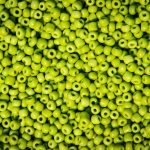You’ll find that nylon is actually a specific type of polyamide, sharing similar chemical structures and amide linkages that give both strength and durability. However, nylon often has better abrasion resistance and tensile strength, making it popular for clothing and industrial use. Polyamide offers more flexibility and chemical resistance. Both absorb moisture differently, which affects performance. If you want to understand how these differences impact your project or choice, keep exploring their properties and applications.
Table of Contents
Key Takeaways
- Polyamide is a broad category of synthetic polymers, while nylon is a specific type of polyamide with particular properties.
- Both polyamide and nylon share amide linkages, providing strength, durability, and resistance to wear and chemicals.
- Nylon generally has superior tensile strength and abrasion resistance compared to other polyamides.
- Both materials absorb moisture, but nylon tends to absorb more, affecting drying time and performance in humid conditions.
- Polyamide offers more flexibility and chemical resistance, whereas nylon is favored for cost-effectiveness and mechanical strength in many applications.
Defining Polyamide
Polyamide refers to a group of synthetic polymers characterized by repeating amide linkages. When you hear “polyamide,” think of a broad family of materials created by linking molecules through amide bonds.
These polymers are known for their strength, durability, and resistance to wear and chemicals. You’ll find polyamides used in everything from textiles and automotive parts to packaging and industrial components. They can be engineered to offer flexibility or toughness, depending on the application.
Polyamides combine strength and durability, adaptable for flexible textiles or tough automotive parts.
While polyamides are synthetic, their structure mimics natural proteins like silk and wool, which also contain amide bonds. Understanding polyamide helps you see its versatility and why it plays a critical role in manufacturing various everyday and industrial products.
This foundational knowledge sets the stage for exploring specific types like nylon.
Understanding Nylon
Nylon stands out as one of the most popular and widely used synthetic fibers in the polyamide family. When you use nylon, you benefit from its exceptional strength, elasticity, and resistance to abrasion.
It’s lightweight, dries quickly, and resists mildew, making it ideal for clothing, upholstery, and industrial applications. You’ll also find nylon in everyday items like ropes, fishing lines, and parachutes because it combines durability with flexibility.
Unlike natural fibers, nylon maintains its shape well and withstands repeated wear. When handling nylon, you’ll notice it’s smooth and easy to dye, offering vibrant colors.
Understanding nylon’s practical advantages helps you appreciate why it remains a go-to material across various industries, balancing performance with versatility.
Chemical Composition Comparison
When you compare the chemical composition of polyamide and nylon, you’ll notice differences in their molecular structures and the polymerization processes that create them.
You’ll also see how their functional groups affect their properties and uses.
Let’s explore these key aspects to understand what sets them apart.
Molecular Structure Differences
Although both materials belong to the same polymer family, their molecular structures reveal key differences that affect their properties.
When you look closely, nylon is a specific type of polyamide, made from repeating units linked by amide bonds. However, polyamides include a broader range of polymers with varying chain lengths and arrangements.
Nylon’s chains typically feature regular, symmetrical structures, which give it strength and durability. In contrast, other polyamides might’ve irregular or branched chains, altering flexibility and melting points.
Polymerization Process Overview
Since polyamides cover a wide range of polymers, their polymerization processes vary depending on the specific monomers involved.
When you look at nylon, a common polyamide, it typically forms through condensation polymerization, where diamines react with dicarboxylic acids, releasing small molecules like water. This step-growth polymerization builds long chains by linking monomers with amide bonds.
In contrast, some polyamides can form via ring-opening polymerization, where cyclic monomers open up and connect to create the polymer chain. Understanding these processes helps you see how the chemical composition influences the properties of the final material.
While nylon’s synthesis often focuses on specific monomers like hexamethylenediamine and adipic acid, other polyamides might use different monomers, altering polymerization conditions and characteristics.
Functional Group Characteristics
Understanding the functional groups in polyamides and nylon reveals why their properties often overlap yet sometimes differ. Both contain amide linkages (-CONH-) formed by the reaction of carboxyl and amine groups, which provide strong hydrogen bonding. This bonding gives them toughness, durability, and resistance to chemicals.
However, nylon is a specific type of polyamide with a regular repeating unit, often derived from specific monomers like hexamethylenediamine and adipic acid. Polyamides, in general, can vary in their chemical structure, affecting flexibility and moisture absorption.
When you compare them, nylon’s uniform functional groups create consistent properties, while other polyamides might include variations that tweak strength or elasticity. So, the key lies in the amide functional group but also in the subtle differences in their molecular arrangements.
Physical Properties of Polyamide and Nylon
You’ll notice both polyamide and nylon offer impressive strength and durability, making them great for tough applications.
However, their moisture absorption traits can differ, which affects performance in wet conditions.
Let’s explore how these physical properties compare so you can see what fits your needs best.
Strength and Durability
Although polyamide and nylon are often used interchangeably, their strength and durability can differ based on their specific formulations.
When you choose nylon, you’re typically getting a material known for excellent tensile strength and resilience, making it ideal for heavy-duty applications.
Polyamide, as a broader category, includes various types with varying durability levels. You’ll find that some polyamides match or even exceed nylon’s toughness, especially when enhanced with additives.
However, nylon tends to have a slight edge in abrasion resistance, helping it withstand wear and tear better over time.
In practical terms, if your project demands consistent strength and long-lasting performance, nylon is often the safer bet.
Still, selecting the right polyamide variant can provide similar durability, depending on your needs.
Moisture Absorption Traits
Because both polyamide and nylon are hygroscopic materials, they absorb moisture from their surroundings, which can affect their performance.
When you work with these fibers, you’ll notice they gain weight and swell as they take in water. This moisture absorption can change their mechanical properties—making them softer and less stiff.
For example, nylon’s tensile strength decreases when wet, which might impact applications where exposure to humidity is common. Polyamide behaves similarly but can vary slightly depending on its specific type.
You should consider this trait when choosing materials for products exposed to moisture, like outdoor gear or automotive parts. Managing moisture content effectively guarantees you maintain the desired durability and dimensional stability in your polyamide or nylon items.
Common Applications of Polyamide
Polyamide finds its way into countless everyday items due to its durability and versatility. When you handle sportswear or outdoor gear, polyamide’s lightweight strength and moisture resistance keep you comfortable.
You’ll also find it in automotive parts, where its toughness and heat resistance contribute to safer, longer-lasting vehicles. If you use kitchen utensils, polyamide components resist heat and abrasion, making your cooking tools reliable.
Additionally, polyamide plays an essential role in electrical insulation, protecting circuits and devices you rely on daily. Even in industrial settings, you’ll see polyamide used for gears, bearings, and conveyor belts because it withstands wear and friction.
Typical Uses of Nylon
Nylon often appears in your everyday life thanks to its strength and flexibility.
Nylon’s strength and flexibility make it a reliable part of daily essentials.
You’ll find it in clothing like stockings, activewear, and swimwear because it stretches comfortably and dries quickly.
When you pick up a toothbrush, nylon bristles are usually what you’re gripping, offering durability and gentle cleaning.
If you use a backpack or luggage, nylon fabric keeps your gear protected.
In your home, nylon appears in carpets and upholstery, resisting wear and tear.
Nylon’s toughness also makes it ideal for industrial uses, such as ropes, fishing lines, and mechanical parts.
Whether you’re wearing it, carrying it, or using it, nylon’s versatility keeps things strong and functional in countless ways every day.
Advantages and Disadvantages of Each Material
Although both materials share similar properties, each comes with its own set of advantages and disadvantages that might affect your choice depending on the intended use.
You’ll find polyamide offers excellent elasticity and abrasion resistance, making it great for activewear and outdoor gear. Nylon, on the other hand, often provides better strength and durability but can absorb more moisture, which might be a downside in wet conditions.
- Polyamide resists wear well but may degrade under prolonged UV exposure.
- Nylon is stronger but tends to absorb water, affecting drying time.
- Polyamide feels softer and more comfortable against the skin.
- Nylon is generally more cost-effective but less elastic than polyamide.
Understanding these trade-offs helps you decide which fits your project best.
How to Choose Between Polyamide and Nylon
When deciding which material suits your needs best, consider the specific demands of your project and environment.
If you need durability and resistance to wear, nylon, a type of polyamide, is often your go-to choice. It performs well under mechanical stress and is ideal for applications like textiles, automotive parts, and industrial components.
On the other hand, if chemical resistance and flexibility are more critical, you might lean toward certain polyamide variants tailored for those traits.
Also, think about moisture absorption; nylon tends to absorb more water, affecting performance in humid conditions.
Evaluate factors like cost, processing methods, and end-use environment to make a smart choice. By matching material properties with your project’s needs, you guarantee maximum functionality and longevity.
Frequently Asked Questions
Can Polyamide or Nylon Be Recycled Easily?
You can recycle polyamide and nylon, but it’s not always easy. They need specialized processes, and not all recycling centers accept them. Still, with proper sorting and facilities, you can reduce waste and reuse these materials effectively.
Are Polyamide and Nylon Safe for Food Packaging?
You’d think polyamide or nylon would make your sandwich explode with chemicals, but they’re actually safe for food packaging when properly processed. Just make sure they meet food-grade standards before you trust them with your snacks.
How Do Polyamide and Nylon React to UV Exposure?
You’ll find both polyamide and nylon degrade under UV exposure, losing strength and becoming brittle over time. To protect them, it’s best to add UV stabilizers or coatings, especially if they’re used outdoors.
What Is the Environmental Impact of Producing Nylon?
You’ll find that producing nylon consumes significant energy and releases greenhouse gases. It also relies on non-renewable petroleum, contributing to pollution and resource depletion. Choosing recycled nylon can help reduce these environmental impacts effectively.
Can Polyamide or Nylon Cause Allergic Reactions?
Allergic reactions to polyamide or nylon are like rare lightning strikes—uncommon but possible. If you’re sensitive, skin irritation or rashes might occur. Always test new fabrics on a small skin patch before full contact.
- Does Chiffon Fabric Stink - July 15, 2025
- Does Chiffon Fabric Affect the Economy - July 15, 2025
- Does Cotton Fabric Have a Nap - July 15, 2025







